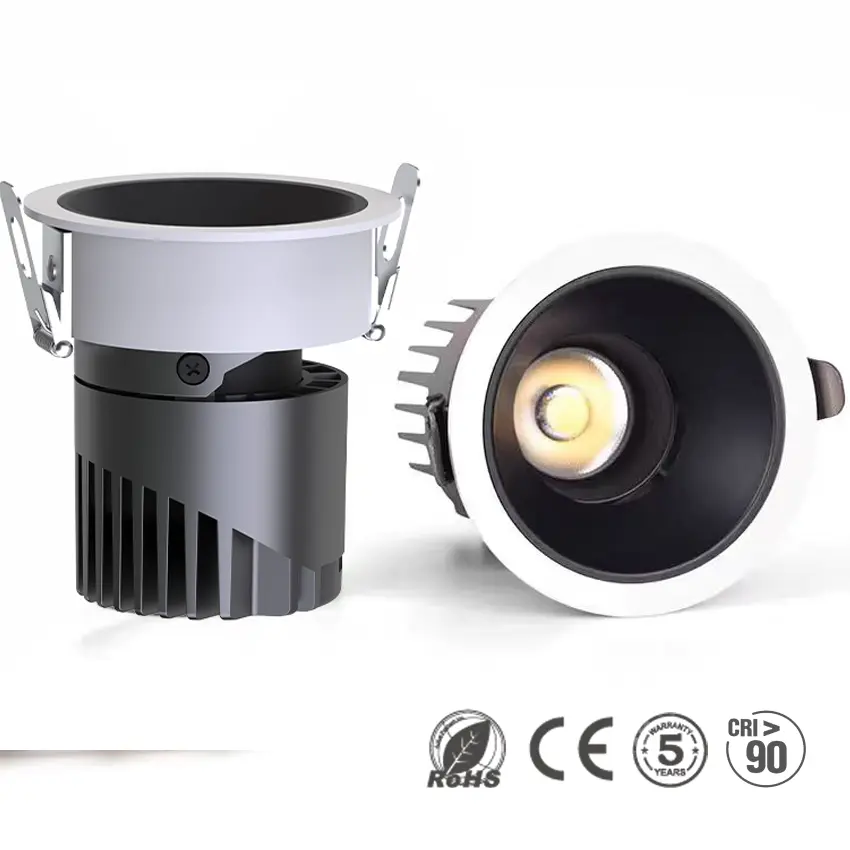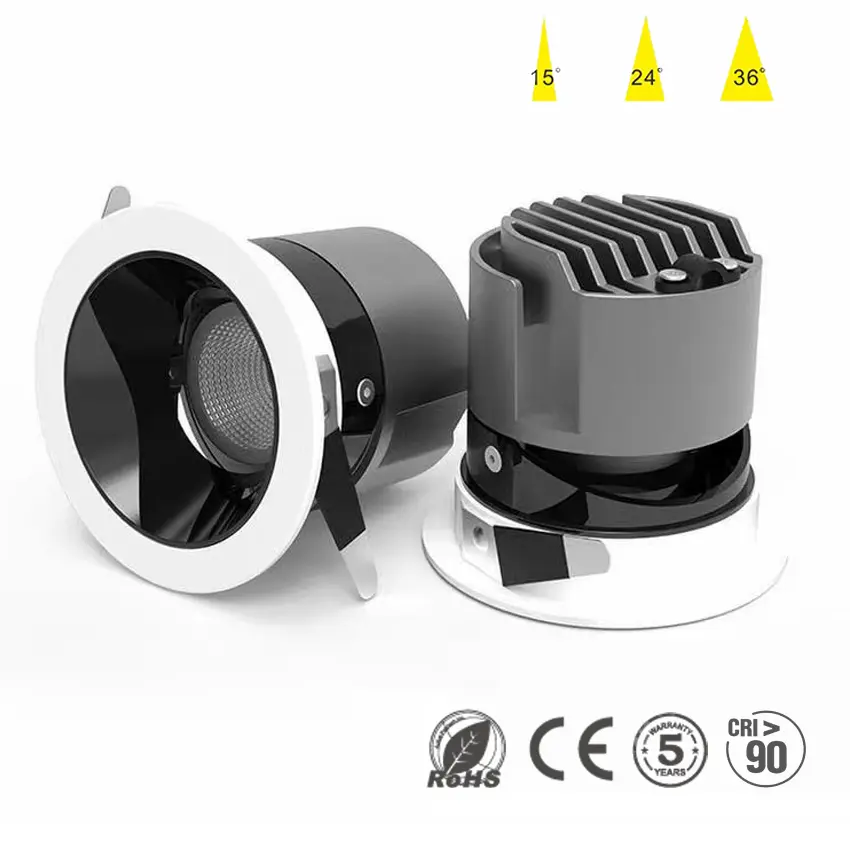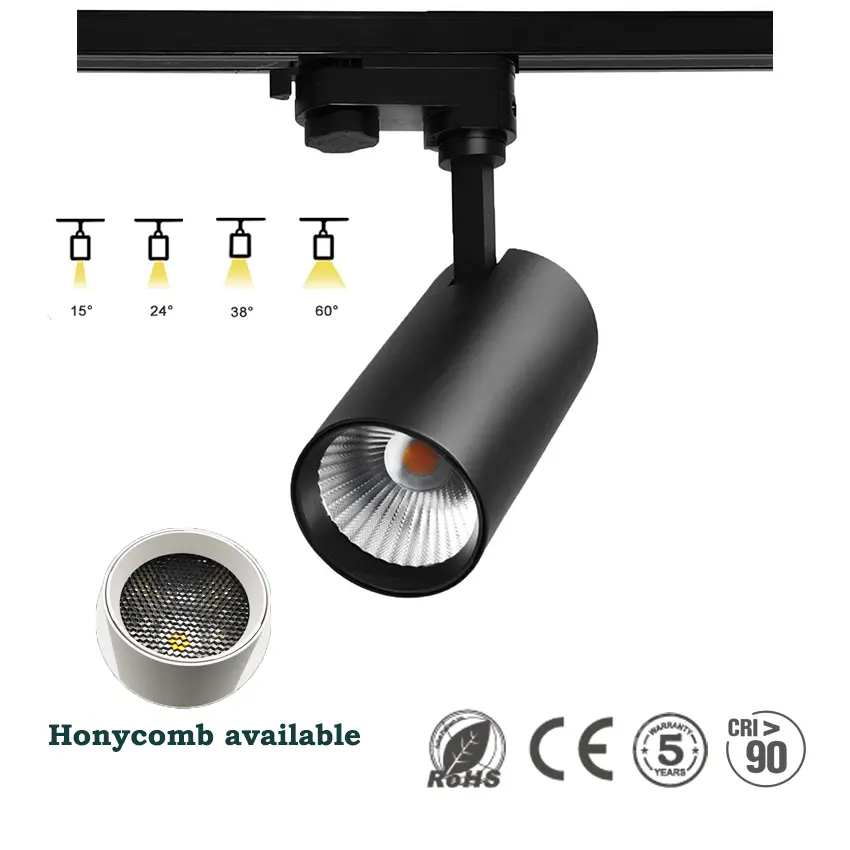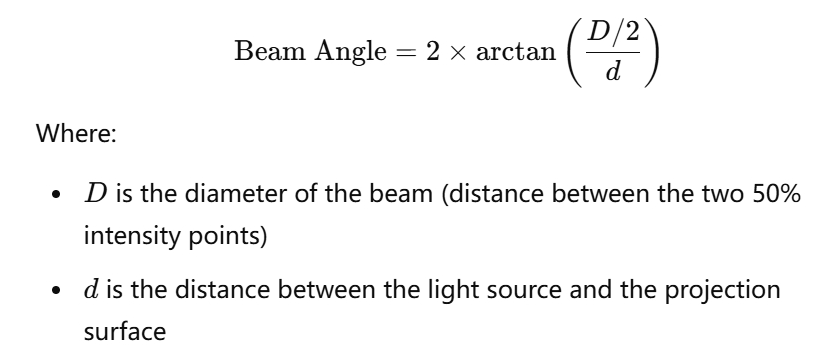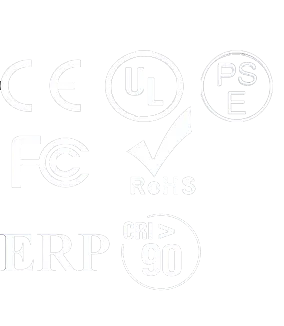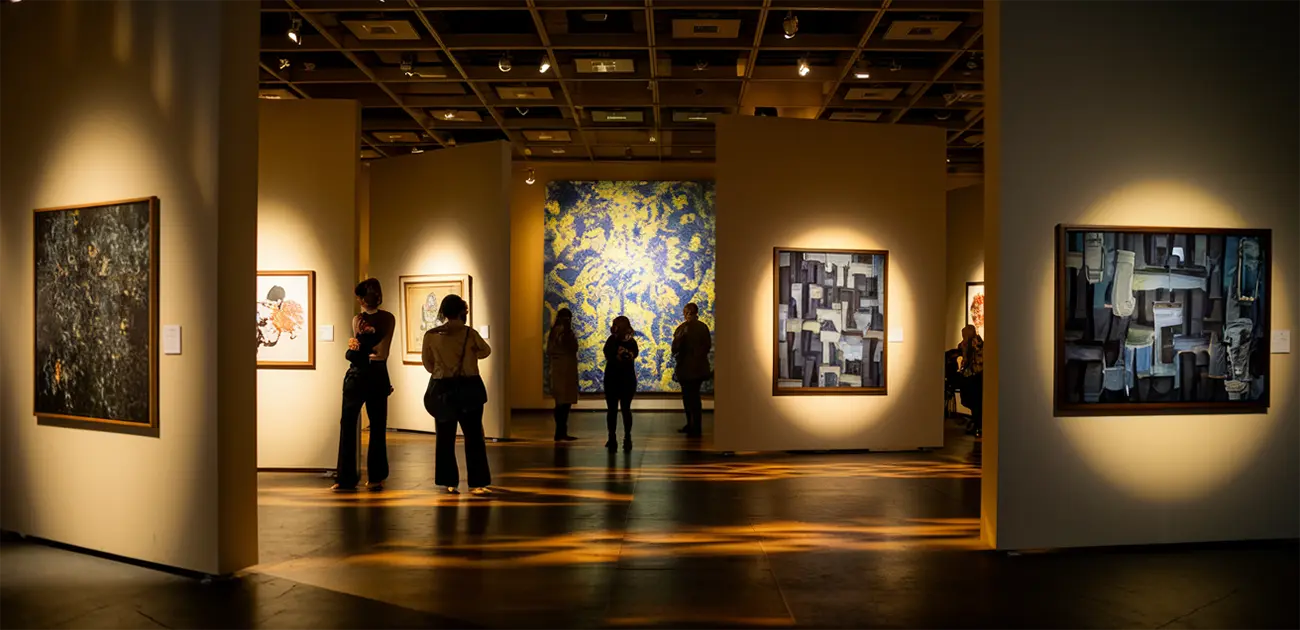
Beam Angle Secrets: Have You Chosen the Right Lighting Angle for Your LED Fixtures?
“Is Your Angle Right?”
No, seriously. We’re not talking about photography or art—we’re talking about one of the most critical decisions in lighting design-beam angle. If you think you’ve mastered LED fixtures and lighting solutions but haven’t paid enough attention to beam angles, you might be missing a key factor.
Beam angle plays a huge role in how a space feels and functions. Too narrow? You’ll get harsh, concentrated spots. Too wide? The light loses focus, leaving key areas underlit. Imagine designing a sleek office space where the light is either too glaring or too dim. Everything else might be perfect, but the wrong beam angle could ruin the entire atmosphere.
And it’s not just about light quality—it’s about your professional credibility. Overlooking beam angle might waste your client’s resources and tarnish your reputation.
Don’t let beam angle be your blind spot. It’s time to get it right and ensure your projects shine in every way.
Table of Contents
Basic Concepts of Beam Angles
What are Beam Angles?
The beam angle refers to the width of light emitted from a fixture. When a light is turned on, rays scatter outward, and the beam angle measures how far this spread goes. A narrower beam angle means more focused light, while a wider angle covers a larger area but with less intensity.
For example, a theater spotlight has a narrow beam angle, focusing all light on one actor, drawing attention to a specific area. This is useful for dramatic, focused lighting, like in homes or exhibitions. Conversely, stadium floodlights have a wide beam angle, illuminating large areas evenly, which is ideal for spaces like malls or offices.
In summary, the beam angle determines how light spreads across a space. Choosing the right beam angle is essential in lighting design, whether you want to focus on a small area or illuminate a larger space evenly.
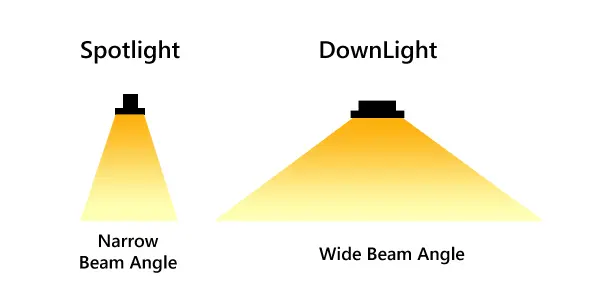
Common Beam Angle Classifications
Narrow Beam Angles (5° – 30°): Best for accent and task lighting, narrow beam angles are ideal for highlighting artwork or specific features in a space.
Medium Beam Angles (30° – 60°): These angles offer versatility, suitable for general lighting in offices, retail stores, and homes.
Wide Beam Angles (60° – 100°): particularly beneficial for achieving uniform lighting over larger areas like commercial spaces, retial and office lighting, and Residential Use;
Very Wide Beam Angles (100° – 140°): Perfect for illuminating large areas, wide beam angles ensure even light distribution, making them ideal for Parking Lot, Street light, warehouses and outdoor settings;
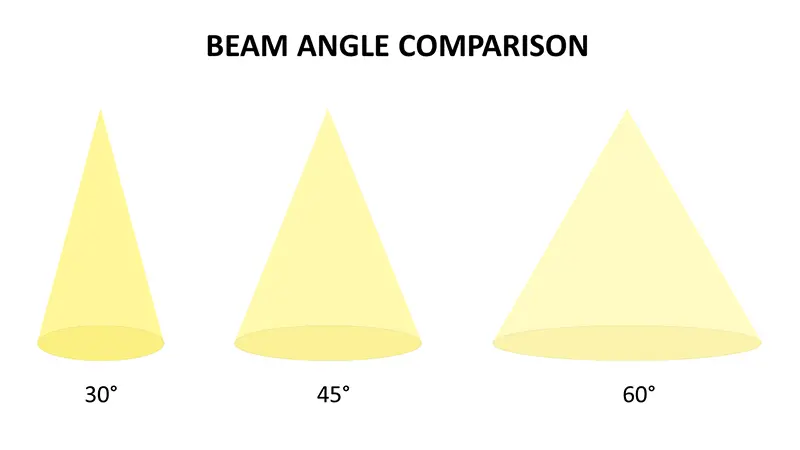
The Science Behind Beam Angle
When we talk about beam angle, we are essentially discussing how light spreads after it leaves a fixture. The formation of beam angle is closely related to optical principles, particularly the clever combination of lenses and LED design. Lenses act like the “steering wheel” of the fixture, guiding the direction of light. By altering the shape and material of the lens, light can be concentrated into a narrow beam or dispersed into a broader coverage area. The design of the LED chip is also crucial; a smaller chip results in a narrower beam, and vice versa. This is why different fixtures using the same LED bulb can produce completely different beam effects.
An Interesting Fact: Why does the same LED bulb behave differently in different fixtures?
The reason for this phenomenon lies in the distinct optical designs of each fixture. In simple terms, the structure of the fixture, as well as its reflectors, lenses, and diffusers, all influence how light spreads. For instance, one fixture may utilize a specialized spotlight lens to focus the light more tightly, while another might use a wide-angle lens to distribute the light more evenly. Therefore, even though it’s the same LED bulb, it can exhibit different beam angles in different fixtures.
Intensity and Focus: The Relationship among CRI, CCT, Lumens, Cover Area and Beam Angle
A. The smaller the beam angle, the more concentrated the light, resulting in higher light density and stronger illumination in the targeted area. Conversely, a wider beam angle will lower the light density and reduce the intensity.
B. Under the same beam angle, the greater the light power, the higher the light density and intensity in the illuminated area. Conversely, lower power results in less intensity.
C. Under the same beam angle and power, different color temperatures can affect light density and therefore alter the intensity in the illuminated area;
D.Under the same beam angle, light power, and color temperature, the light density may be still different, resulting in varying illumination intensity in the targeted area;
E. The smaller the beam angle, the more focused the light becomes, allowing it to illuminate a greater distance under the same conditions.
F. The larger the beam angle, the more the light spreads, increasing the coverage area but reducing the lighting distance under the same conditions.

Importance of Beam Angle
The beam angle significantly influences the effectiveness of lighting in several key areas:
Illuminance:
A smaller beam angle creates more concentrated light, resulting in higher illuminance in a specific area. This is particularly beneficial for applications that require high brightness, such as display lighting or task lighting. In contrast, a larger beam angle disperses light, reducing the illuminance in specific zones while covering a broader area. Therefore, the choice of beam angle directly affects the coverage area and light intensity. Smaller beam angles lead to smaller coverage areas with higher brightness, ideal for environments that demand precision and high contrast. Conversely, larger beam angles diffuse the light, covering more ground but with lower brightness, making them suitable for general ambient lighting.
Light Uniformity:
The beam angle also plays a crucial role in the uniformity of light distribution. A wider beam angle typically provides more uniform illumination, minimizing stark contrasts between light and dark areas. In contrast, a narrower beam angle may lead to more pronounced variations in light intensity within the illuminated area, potentially creating uneven lighting.
Shadow Effects:
Beam angle affects the shape and size of shadows cast by objects. Narrow beam angles tend to produce sharper, more defined shadows, enhancing the dimensionality of a space. In contrast, wider beam angles create softer, more diffused shadows, contributing to a more gentle and less harsh lighting atmosphere.
Color Temperature and Color Rendering:
While the beam angle itself does not directly impact color temperature and color rendering index (CRI), it influences how light is distributed in a space, which can indirectly affect the perception of color temperature and CRI. A well-chosen beam angle can help ensure that colors appear more vibrant and true to life by enhancing the distribution of light across surfaces.
Energy Efficiency:
Selecting the appropriate beam angle can enhance lighting efficiency. For instance, using fixtures with a wide beam angle in scenarios that require focused lighting can lead to unnecessary light wastage, resulting in higher energy costs. Proper beam angle selection optimizes energy use by ensuring that light is directed where it is needed most.
Glare Control:
Beam angle significantly influences the occurrence and control of glare. Narrow beam angles may increase the risk of direct glare, particularly when the light source is visible. In contrast, wider beam angles can help reduce glare, enhancing visual comfort and creating a more pleasant lighting environment.
Atmospheric and Visual Effects:
The beam angle also impacts the ambiance and overall visual experience of a space. Narrow beam angles can create dramatic or focused visual effects, making them suitable for setting specific moods or highlighting particular features. Conversely, wider beam angles contribute to a more relaxed and natural lighting experience, ideal for spaces where comfort and openness are desired.

LED Fixtures and Their Beam Angles
LED lighting comes in various forms, each designed for specific applications and environments. Understanding the differences in beam angles among these fixtures can significantly impact the effectiveness of your lighting design. Let’s delve into some common types of LED fixtures and their typical beam angles.
LED Downlights :
Downlights are typically recessed fixtures that provide ambient lighting. Their beam angles generally range from 30° to 60°. A narrower beam angle (around 30°) can create a more focused light, perfect for highlighting specific areas or features in a room. In contrast, a wider beam angle (up to 60°) is ideal for general illumination, making spaces feel more open and inviting.
LED Floodlights:
Floodlights are designed for outdoor applications and offer a wide beam angle, typically between 90° and 120°. This broad coverage is excellent for illuminating large areas, such as parking lots or sports fields, ensuring safety and visibility.
LED Spotlights :
Spotlights produce a narrow beam, usually around 15° to 30°. This focused light is ideal for accentuating artworks in galleries or displays in retail environments. The precision of the beam can create dramatic effects and draw attention to specific elements within a space.
LED Track Lights:
LED Track lighting systems are versatile, allowing for various beam angles depending on the installed fixtures. Typically, track lights can have beam angles from 15° to 60°. This adaptability makes them suitable for different settings, from highlighting products in a store to providing general lighting in a home
Customization Options
A common question that arises is whether beam angles can be customized. The answer is yes, but it depends on the type of fixture. For example, many track lights allow for interchangeable lenses, enabling users to adjust the beam angle according to their specific needs. Floodlights can also feature adjustable optics, allowing for some degree of customization in how light is distributed. However, with downlights and spotlights, customization may be more limited to the design of the fixture itself, as they are typically manufactured with a fixed beam angle.
How to Choose the Right Beam Angle for Your Projects?
Choosing the right beam angle is crucial for achieving effective lighting in any space. The beam angle determines how light is distributed from a fixture, influencing both the functionality and aesthetic of the environment. This guide will help you navigate the process by addressing various factors that impact beam angle selection, ensuring you achieve optimal illumination.
1. What is the Purpose of Your Lighting?
Begin by assessing the purpose of your lighting. Are you illuminating a dining table for a cozy dinner, or are you highlighting artworks in an exhibition? The intended function will dictate the appropriate beam angle.
For instance, task lighting in dining areas often requires a wider beam angle (e.g., 60°-90°) to create a warm and inviting atmosphere, while exhibition lighting benefits from a narrower beam angle (e.g., 15°-30°) that concentrates light on specific pieces, enhancing their visibility and impact.
Practical Tips: Use a laser pointer or beam spread diagram to visualize how different beam angles affect light distribution. This can make technical concepts easier to understand and help you see the effect of various angles in real-time.
2. Application Scenarios
Different scenarios necessitate different beam angles:
- Exhibition Lighting: Requires narrow beam angles to focus on artwork, creating drama and emphasis.
- General Indoor Lighting: Typically calls for wider beam angles to evenly illuminate spaces, providing a comfortable environment.
Assess your application needs carefully to select the most suitable beam angle.
3. Installation Height
The height at which the fixtures are installed significantly influences the beam’s coverage.
- Higher Installations: Fixtures mounted high above the ground generally require narrower beam angles. This ensures that the light can reach the intended area effectively. For example, in large retail spaces or warehouses, high-mounted fixtures may need a narrower beam to ensure proper light penetration to the floor level.
- Lower Installations: Conversely, fixtures positioned closer to the ground can use wider beam angles, allowing light to spread evenly over the intended area.
4. Lighting Objectives
Your specific lighting objectives should inform your beam angle selection.
- Highlighting Objects: If your goal is to spotlight an item, such as a sculpture or product display, opt for a narrower beam angle to concentrate light on the object and draw attention to it.
- Ambient Lighting: For providing general illumination in a room, a wider beam angle is more appropriate, allowing for an even distribution of light that enhances the overall environment.
5. Space Size and Layout
Consider the dimensions and layout of the space.
- Large Open Areas: These often require larger beam angles to ensure that light covers significant areas without creating dark spots.
- Small or Partitioned Spaces: These typically benefit from smaller beam angles, which can direct light to specific areas without overwhelming the space.
6. Reflective Surfaces
The characteristics of surrounding surfaces can also influence your choice of beam angle.
- High Reflectance: In environments with reflective surfaces, a narrower beam angle can be effective since the reflected light contributes to overall illumination. This means you can use smaller beam angles while still achieving adequate lighting levels.
- Low Reflectance: In spaces with darker surfaces, wider beam angles might be necessary to ensure adequate brightness, as less light will bounce back into the space.
7. Energy Efficiency
Choose beam angles that minimize light waste to improve energy efficiency.
- Narrow Beam Angles: While they focus light effectively, they may lead to increased energy usage if not strategically implemented.
- Wider Beam Angles: These can be more efficient in certain applications, particularly where ambient lighting is needed, as they distribute light over a larger area without requiring multiple fixtures.
8. Visual Comfort
Consider the impact of beam angles on visual comfort.
- Avoiding Glare: Narrow beam angles can create harsh light spots and glare, while wider beam angles tend to soften light distribution, making environments more comfortable.
- Lighting Design: Incorporate a variety of beam angles within a space to balance task lighting with ambient illumination, thus promoting overall visual comfort and reducing the potential for eye strain.
9. Fixture Spacing
When designing a lighting layout with multiple fixtures, beam angles will affect the necessary spacing between them.
- Larger Beam Angles: Generally, these allow for wider spacing between fixtures, which can reduce installation costs and create a more streamlined appearance.
- Narrower Beam Angles: Require closer spacing to ensure overlapping light coverage, which may necessitate more fixtures and increase installation expenses
Choosing the Right Beam Angle for Different Applications
Commercial Lighting
Beam angle plays a crucial role in creating an appealing product display in retail environments.
Narrow beam angles (20-30 degrees) are ideal for highlighting premium products in display cases, such as jewelry or watches. This focused lighting draws attention to the finer details and textures, enhancing the product’s allure.
wide beam angles (60-90 degrees) are better suited for general store lighting, providing even light distribution to ensure customers can comfortably browse merchandise. Thoughtful use of different beam angles can guide customers’ attention, enhancing the overall shopping experience and potentially boosting sales.
Office Lighting
In workspaces, uniform and comfortable lighting is key to increasing productivity and reducing eye strain.
Medium to wide beam angles (60-120 degrees) are often used for ambient lighting, offering broad and even light coverage that’s perfect for open-plan office areas. These angles ensure that the workspace is well-lit, with minimal glare and shadows.
Adjustable beam angle fixtures are becoming increasingly popular in modern office design. These fixtures allow for flexibility in lighting distribution based on different tasks or times of day, improving comfort and productivity while also accommodating changes in office layout or function.
Residential Lighting
In homes, the choice of beam angle can significantly influence the atmosphere and functionality of a room.
Wide beam angles (90-120 degrees) are ideal for general lighting in living rooms or bedrooms, creating a soft and even spread of light.
Medium beam angles (30-60 degrees) are useful in task-oriented areas like kitchens or home offices, where more focused lighting is necessary for activities like cooking or reading. For accent lighting, such as illuminating artwork,
Narrow beam angles (10-30 degrees) work best, highlighting specific objects or areas with precision.
Museum and Art Exhibit Lighting
The selection of beam angles in museums goes beyond aesthetic appeal. For instance,
Narrow beam angles (15-25 degrees) are perfect for emphasizing intricate pieces such as jewelry or small sculptures. The focused lighting isolates the object, creating a dramatic spotlight effect that enhances visual impact without spilling unnecessary light into surrounding areas.
Medium beam angles (30-45 degrees), on the other hand, are ideal for lighting larger works such as paintings or medium-sized sculptures. This wider angle provides enough light coverage to showcase the piece without overwhelming it, maintaining a balance between focus and general lighting.
Outdoor Lighting
In outdoor environments, beam angles can create a wide variety of visual effects. For street lighting or landscape illumination,
wide beam angles (60 degrees or more) are often preferred to cover large areas, ensuring safety and comfort. For architectural lighting;
Narrow beam angles (10-25 degrees) are often used to emphasize vertical lines, such as trees or building facades, using uplighting techniques to create dramatic light-and-shadow effects. The choice of beam angle can transform outdoor spaces, highlighting key features or creating an inviting atmosphere while balancing aesthetics and functionality.
Industrial Lighting
In factories, warehouses, and other industrial settings, beam angles affect both efficiency and safety.
Wide beam angles are typically used to provide general lighting across large areas, ensuring workers can operate safely and efficiently;
Narrow beam angles are useful for task lighting in specific workstations, providing focused illumination where precise, detailed work is required. The proper selection of beam angles helps maintain a well-lit, productive environment while reducing energy waste.
Medical Lighting
In medical environments, accurate control over beam angles is crucial for procedures and diagnoses. Different medical tasks require specific lighting conditions, and choosing the right beam angle can optimize visibility, enhance precision, and improve patient outcomes. For example, surgery requires narrow, highly controlled beam angles to focus light on the operating area without causing glare or shadows, while general lighting in examination rooms may benefit from wider beam angles to provide even illumination throughout the space.
| Beam angle | Type | Description |
|---|---|---|
| 10° – 18° | Very Narrow | Ideal for accent lighting and highlighting details. |
| 18° – 29° | Narrow Spot | Suitable for focused task lighting |
| 29° – 46° | Medium Narrow | Versatile for various applications including accent and general lighting |
| 46° – 70° | Medium | Commonly used for general room lighting |
| 70° – 100° | Medium Wide | Good for larger areas needing even illumination |
| 100° – 130° | Wide | Effective for general illumination in large spaces |
| Over 130° | Very Wide | Best for floodlighting large outdoor areas |
How to Measure Beam Angle
To measure the beam angle of LED lighting, you can use two primary methods: the Full Width at Half Maximum (FWHM) method and the 10% Peak Intensity method.
Full Width at Half Maximum (FWHM)
The FWHM method is the most commonly used approach for measuring beam angle. It determines the angle at which the light intensity reaches 50% of its maximum value on either side of the central axis. Here’s how to measure it:
- Setup: Mount the LED light in a stable position, directing it towards a flat surface at a controlled distance of 1-2 meters in a dark environment;
- Project Light Beam: Turn on the LED light and let it project a beam onto the flat surface. This will create a bright spot in the center with light gradually fading outward;
- Measurement: Use a lux meter or light meter to measure the light intensity in the center of the beam where the light is brightest. This point is considered the reference point of 100% intensity;
- Find the Points of 50% Intensity: Move the lux meter from the center to the edge of the beam to find and mark the points where the light intensity falls to 50% of its maximum value;
- Measure the Distance Between the 50% Points:Measure the distance between the two marked 50% intensity points on the surface. This is the diameter of the beam at the specified distance from the light source.
- Calculate Beam Angle: To calculate the beam angle, use the formula:
This will give you the beam angle in degrees.
10% Peak Intensity Method
This method is less common but can be used in some scenarios. It involves measuring the angle at which light intensity falls to 10% of its peak value:
- Setup: Similar to FWHM, position your LED light source and use a light meter.
- Measurement: Measure light intensity and identify the peak intensity.
- Calculate Beam Angle: Measure the angles where intensity drops to 10% of this peak on both sides. The total gives you the beam angle.
Alternative Method (Manufacturer’s Spec Sheet)
Many LED light manufacturers provide beam angle data on product spec sheets, calculated through photometric tests in specialized labs. If available, this is often a quicker and more accurate source.
Common Misunderstanding about Beam Angles
Larger Beam Angle = More Light
Many people mistakenly believe that a larger beam angle means more light output. In reality, this is a common misunderstanding. The total amount of light emitted by a fixture is determined by its power and lumen output, not by the beam angle. The truth is: the beam angle only determines the area of light distribution, not the amount of light. When the beam angle increases, the light spreads over a wider area, but the light intensity per unit area decreases. This means that although a larger area is illuminated, the brightness is reduced.
For Example, In a room, using a light fixture with a large beam angle will create a softer, more diffused light. However, if high-intensity spot lighting is needed, a large beam angle may disperse the light too much, failing to achieve the desired effect.
Beam Angle is unimportant
Another common misunderstanding is that the beam angle isn’t important in lighting design. In reality, beam angle is one of the key factors when selecting a fixture, as it directly influences whether the fixture meets the lighting needs of the space. Choosing the wrong beam angle can ruin the entire lighting design. For example, using a narrow beam angle fixture in a large area that requires wide illumination can result in uneven light distribution.
The truth is: the beam angle is critical for different application scenarios. In retail environments, lighting designs often combine wide and narrow beam fixtures to create optimal product displays, while office spaces usually favor wider beam angles to provide even and comfortable lighting.
Narrow Beam Angle is Always Ideal for Precision Work
Many assume that a narrow beam angle is always best for precision task lighting, as it supposedly highlights specific areas more effectively. However, this is not always the case. Sometimes, a beam that is too narrow can create overly bright hotspots, causing visual discomfort or uneven lighting.
The truth is: a medium beam angle may be more practical in many cases, especially when you need to balance focused illumination with even light distribution. A medium beam angle can provide both precision and comfort, creating a more visually pleasant experience.
No need to consider the working enviroment
A common mistake when selecting beam angles is ignoring the environment where the fixture will be used. For example, using a narrow beam fixture in a large room that requires broad illumination, or using a wide beam fixture in a display case that requires focused lighting, may result in suboptimal lighting effects.
The truth is: when choosing a beam angle, it’s essential to assess the specific working enviroment case. For larger open spaces, wider beam angles are generally more suitable to ensure that light is evenly distributed across the space. For areas that require accent lighting, such as display cases, narrow beam angles can provide more focused illumination and enhance visibility.
Large Beam Angles = Good
Some people blindly believe that a larger beam angle is always better, especially in situations where broad coverage is needed. However, while a larger beam angle can cover a wider area, it can also disperse the light too much, reducing brightness. In scenarios where accent lighting is required, a large beam angle may result in light being spread too thin.
The truth is: the choice of beam angle should be balanced according to the specific lighting requirements. For spaces that need broad illumination, a wide beam angle can provide even lighting. However, in scenarios like art exhibitions, Gallary or retail displays where objects need to be highlighted, a narrower beam angle is more effective at providing focused lighting and enhancing visual impact.
No need to Consider Color Rendering and Light Efficacy
Another common misconception when selecting beam angles is neglecting the fixture’s Color Rendering Index (CRI) and luminous efficacy (lm/W). This can lead to selecting fixtures that do not accurately display the colors of objects or have excessive energy consumption.
The truth is: when choosing beam angles, the CRI and light efficiency of the fixture must also be considered. Fixtures with a high CRI can accurately render colors, making them ideal for environments where color accuracy is important, such as museums or retail stores. Fixtures with high efficacy, on the other hand, can provide high-quality lighting while minimizing energy consumption, improving overall energy efficiency.
Didn’t test in spot
Another mistake people make when choosing beam angles is relying too heavily on specifications and didn’t conduct real-world tests in the pratical working environment. This can result in the fixture underperforming when installed in the intended space. For example, beam angles can behave differently depending on mounting height or environmental factors.
The truth is: when choosing lighting fixtures, it’s essential to test the beam angle in the real environment. By simulating the actual use scenario, you can better understand how the light will be distributed and how intense it will be, ensuring the lighting effect matches expectations.
Case Study: Successful Applications of Beam Angles in Lighting Design
Beam angle selection plays a critical role in achieving the desired lighting effect for different environments. Properly chosen beam angles can enhance aesthetics, improve functionality, and optimize energy efficiency. In this case study, we will explore three successful applications of beam angles: museum lighting.
Beam Angle in Focus: In this project, narrow beam angles (around 15°-25°) were used to concentrate light on specific pieces of art without illuminating the surrounding walls too much. This creates a spotlight effect, which draws the visitor’s attention directly to the artwork.




By focusing the light precisely, curators were able to create contrast between the art and the environment, enhancing the artwork’s depth and texture. For sculptures, the directional lighting with a narrow beam angle helped emphasize the 3D contours and added a sense of drama, making the exhibits visually compelling. This careful manipulation of light was essential in maintaining the museum’s elegant ambiance while making the exhibits more engaging.
Conclusion
Understanding LED lighting beam angles is essential for achieving effective illumination tailored to specific needs. By considering factors such as room size, ceiling height, and intended use, one can select the appropriate beam angle to enhance both functionality and aesthetics in any environment.This comprehensive overview highlights the significance of beam angles in LED lighting design and provides guidance on making informed choices when selecting fixtures for various applications. As technology advances and new products emerge, staying informed about these specifications will continue to be crucial in optimizing lighting solutions.
Share this article
Written by : Sophia Ng
Hey there! This is Sophia Ng, Worked for Sunroleds with 15 years in the industry, specializing in sales and marketing.
I'm committed to excellence and always aim to exceed expectations. Outside of work, I enjoy traveling and exploring traditional Chinese culture.
Let's connect and make some magic happen!

